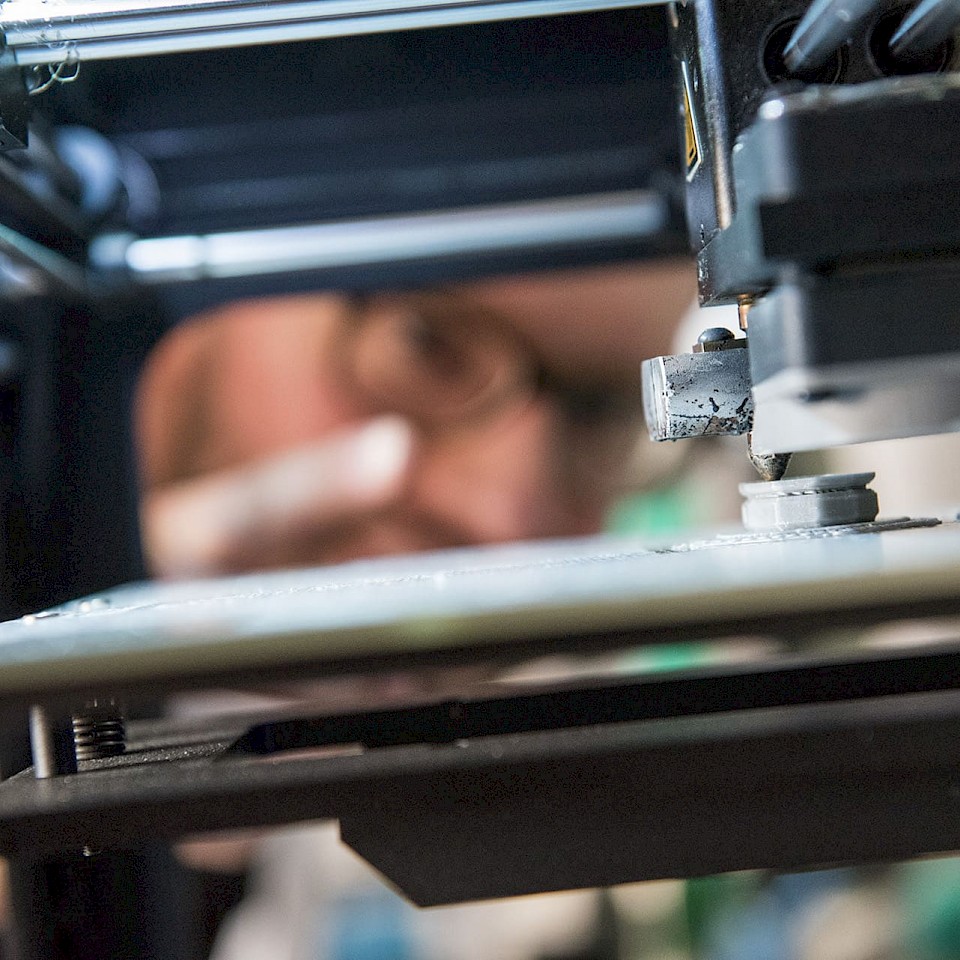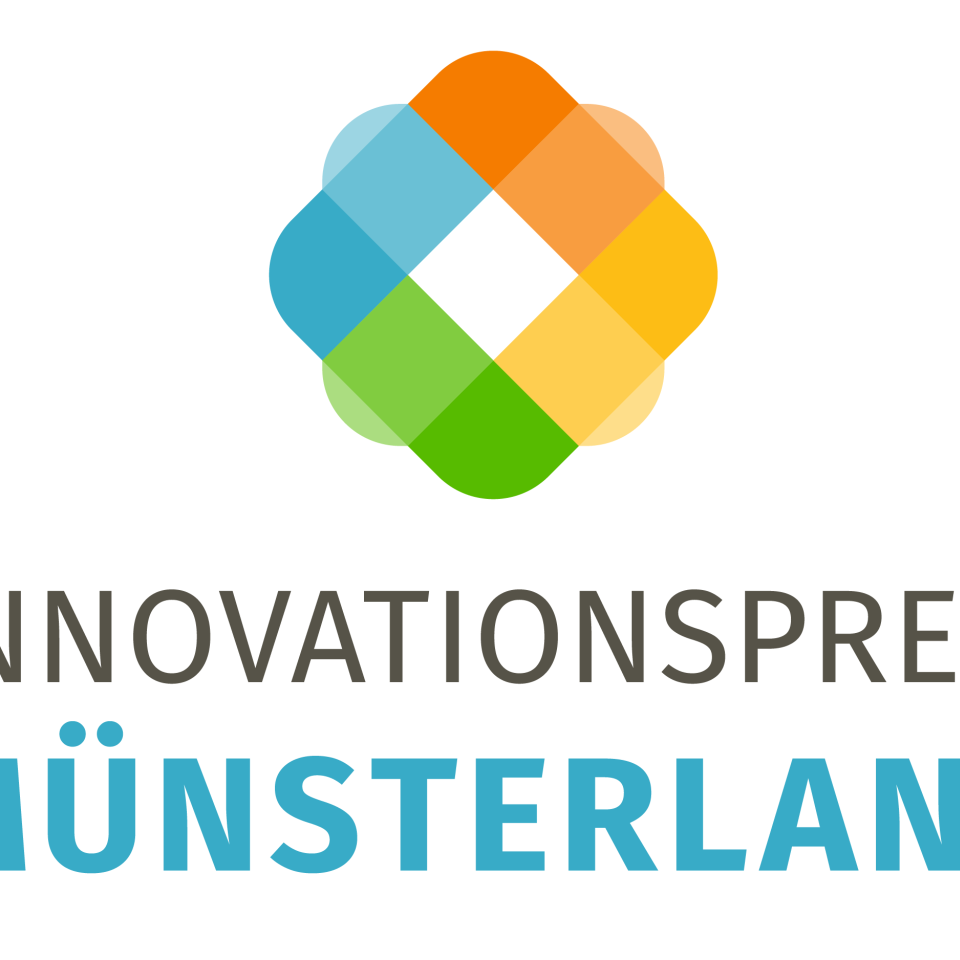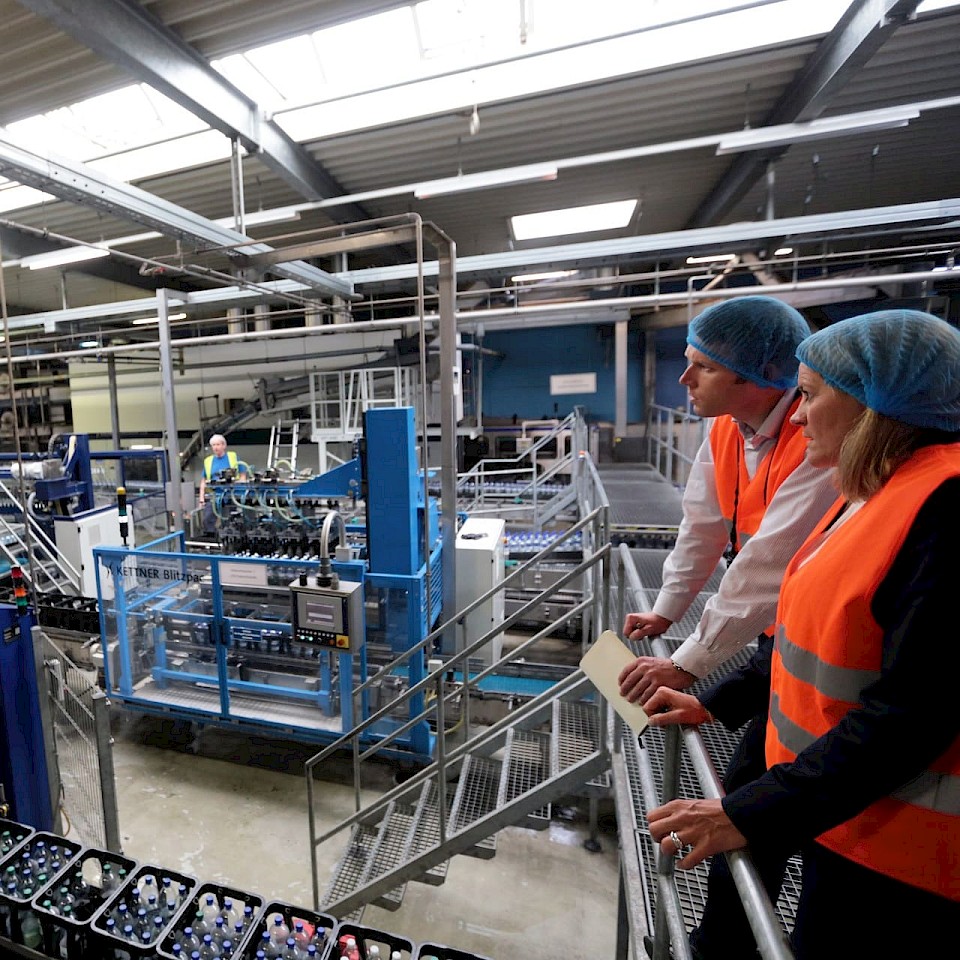
© Münsterland e.V./Philipp Fölting
Less waste thanks to recycled concrete: old becomes new
Betonwerk Büscher GmbH & Co. KG
The amount of construction and demolition waste in Germany is huge. But so far it cannot be used for new buildings. A family-owned company from Münsterland wants to change that. It has developed a process with which demolition material or mixed construction waste can be recycled and new houses can be built from old materials.
Learn more about the innovation from Münsterland.
Betonwerk Büscher GmbH & Co. KG, Heek
Betonwerk Büscher GmbH & Co KG is a medium-sized, family-run company from Heek and has been successfully represented on the market with precast concrete parts since 1961. In 2007, the company settled at its current headquarters in Heek and attaches great importance to research and development in order to generate new ways of using demolition materials.
Büscher Containerdienst- und Toilettenmietservice GmbH & Co. KG, Heek
Büscher Containerdienst- und Toilettenmietservice GmbH & Co KG is part of the Büscher group of companies and has been successfully active in the field of recycling management since 1984. Together, the two companies use their synergies to find solutions to problems related to issues such as construction waste or landfill shortages.
Challenge: Where to put construction and demolition waste?
According to the Federal Statistical Office, Germany produced 417 million tonnes of waste in 2019, with construction and demolition waste accounting for just under 230 tonnes, or around 55 per cent. The ground demolition material can be reprocessed for road construction and backfilling, but supply now far exceeds demand. Many municipalities no longer know what to do with the waste, because more and more old houses are being demolished. Up to now, the demolition material may not be used for new buildings. The environment also suffers from this: in order to extract building materials such as gravel, aggregate and sand, nature, the environment and the natural water balance are interfered with and habitat is destroyed in the process.
The brothers and owners of Betonwerk Büscher, Hans-Jürgen and Wolfgang Büscher, wanted to change this. Their vision: to turn old buildings into new buildings, with prefabricated elements made of recycled concrete that are just as safe and stable as prefabricated concrete elements made of primary raw materials. Up to now, a maximum of 30 to 45 per cent of old material may be added when casting new moulded parts.
Solution: New building material from old demolition material

© Büscher
The Büscher brothers experimented with demolition material that they had previously crushed in the stone mill. In the beginning, they were ridiculed by their own staff and had to accept setbacks again and again because the results did not meet the requirements. Five years of trials were conducted, the ingredients of the new building material were changed again and again, and they also tried out a wide variety of trial mixtures.
In this way, Büscher developed a process that creates an innovative building material from the old demolition material, which serves as a substitute for gravel and sand. This makes it possible to produce prefabricated concrete elements from 75 per cent old materials - a recycling proportion never achieved before, with 100 per cent of the primary raw materials gravel/gravel/sand being replaced. "This is a fine example of circular economy with the goal of moving from downcycling to upcycling," emphasises Thomas Overbeeke, who is in charge of the project.
Success: Show houses made of recycled concrete

© Münsterland e.V./Philipp Fölting
The new recycled concrete elements can keep up with traditionally produced elements - this is confirmed by the universities of Kaiserslautern and Duisburg-Essen. They have equivalent technical, static and climatic properties. The recycled concrete is suitable for load-bearing and non-load-bearing interior walls and allows new architectural scope. Since the precast concrete elements are already industrially prefabricated, building projects can also be realised more quickly. In addition, all recycled precast concrete parts can be recycled again and are thus a constant part of the cycle. Old can therefore always become new again.
After eight years of research and development, the recycled concrete in the form of the Büscher wall received general building authority approval from the German Institute for Building Technology in mid-2021. For this purpose, the production process for manufacturing the recycled material was certified, so far unique for this type of recycled aggregate.
To prove that the recycled concrete works, Hans-Jürgen Büscher and Wolfgang Büscher build two show houses in Heek and Nienborg from their new recycled precast concrete elements. The groundbreaking ceremony for the first show house with three residential units took place in 2022. The house meets the KFW 40+ standard and is thus particularly energy-efficient. The Büscher brothers want to convince the professional world of recycled concrete so that the new technology achieves a breakthrough and is also used by other manufacturing plants in the construction industry.
True to the motto "Back for the future", Büscher also accompanies the construction of the recycling houses online. You can follow the status and progress of the projects on the website.
Münsterland Innovation Award 21/22
2022 Betonwerk Büscher GmbH & Co KG was nominated as one of four companies for the Münsterland Innovation Award in the business category. With this video, their innovation, the Büscher wall made of recycled concrete, was presented at the award ceremony.
As a regional joint initiative, Enabling Networks Münsterland supports companies and universities in the Münsterland region in developing innovations, implementing them and finding the right partners for the project. In order to show how innovative and at the same time cooperative Münsterland already is, the project also went in search of innovative cooperation projects from the region. The results are presented on this page. The Enabling Networks Münsterland project is funded by the European Union and the NRW Ministry of Economics as part of the ERDF call "Regio.NRW".













